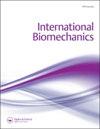如何选择和解释相似性指数来量化步态关节运动学的可变性
Q2 Medicine
引用次数: 15
摘要
摘要步态分析中经常使用重复性和再现性指标来验证模型并在随访中评估患者。在比较关节运动学时,由于缺乏对其变化的确切来源的了解,它们的解释可能会模糊不清。本文研究了四个指标(均方根偏差、平均绝对变异性、多重相关系数和线性拟合方法)与五个混淆因素的关系:关节的运动范围、逐样本幅度变异性、偏移、时移和曲线形状。进行了第一次模拟,以测试每个指数背后的数学。第二个模拟使用傅立叶分解测试了曲线形状对指数的影响。多重相关系数和线性拟合法系数与运动范围无关。在不同的关节中发现了不同的多重相关系数,导致对结果的误解。当时间偏移增加时,不应采用线性拟合方法系数。均方根偏差和平均绝对变异性对所有混淆因素都很敏感。线性拟合法系数似乎最适合评估步态数据的变异性,并辅以均方根偏差或平均绝对变异性作为数据离散度的测量。本文章由计算机程序翻译,如有差异,请以英文原文为准。
How to choose and interpret similarity indices to quantify the variability in gait joint kinematics
Abstract Repeatability and reproducibility indices are often used in gait analysis to validate models and assess patients in their follow-up. When comparing joint kinematics, their interpretation can be ambiguous due to a lack of understanding of the exact sources of their variations. This paper studied four indices (Root Mean Square Deviation, Mean Absolute Variability, Coefficient of Multiple Correlation, and Linear Fit Method) in relation to five confusing-factors: joints’ range of motion, sample-by-sample amplitude variability, offset, time shift and curve shape. A first simulation was conducted to test the mathematics behind each index. A second simulation tested the influence of the curve shape on the indices using a Fourier’s decomposition. The Coefficient of Multiple Correlation and the Linear Fit method Coefficients were independent from the range of motion. Different Coefficients of Multiple Correlation were found among different joints, leading to misinterpretation of the results. The Linear Fit Method coefficients should not be adopted when time shift increases. Root Mean Square Deviation and Mean Absolute Variability were sensitive to all the confusing-factors. The Linear Fit Method coefficients seemed to be the most suitable to assess gait data variability, complemented with Root Mean Square Deviation or Mean Absolute Variability as measurements of data dispersion.
求助全文
通过发布文献求助,成功后即可免费获取论文全文。
去求助
来源期刊

International Biomechanics
Medicine-Rehabilitation
CiteScore
1.90
自引率
0.00%
发文量
2
审稿时长
17 weeks
期刊介绍:
International Biomechanics is a fully Open Access biomechanics journal that aims to foster innovation, debate and collaboration across the full spectrum of biomechanics. We publish original articles, reviews, and short communications in all areas of biomechanics and welcome papers that explore: Bio-fluid mechanics, Continuum Biomechanics, Biotribology, Cellular Biomechanics, Mechanobiology, Mechano-transduction, Tissue Mechanics, Comparative Biomechanics and Functional Anatomy, Allometry, Animal locomotion in biomechanics, Gait analysis in biomechanics, Musculoskeletal and Orthopaedic Biomechanics, Cardiovascular Biomechanics, Plant Biomechanics, Injury Biomechanics, Impact Biomechanics, Sport and Exercise Biomechanics, Kinesiology, Rehabilitation in biomechanics, Quantitative Ergonomics, Human Factors engineering, Occupational Biomechanics, Developmental Biomechanics.
 求助内容:
求助内容: 应助结果提醒方式:
应助结果提醒方式:


